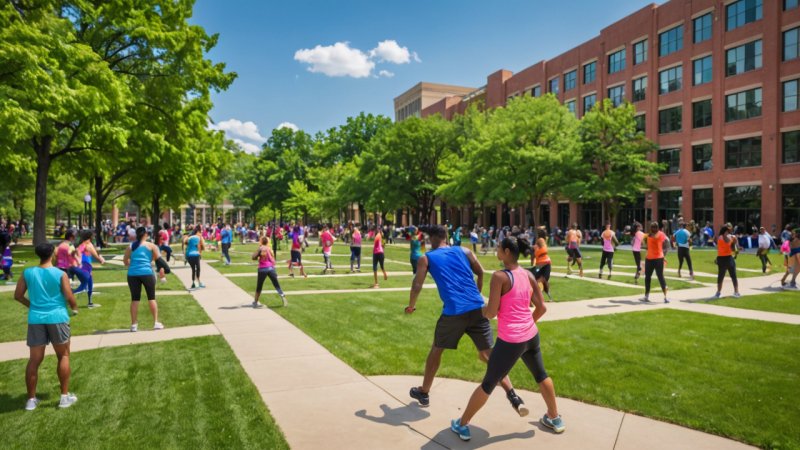In urban environments, the challenge of encouraging physical activity is multifaceted. Two prominent solutions are the development of public parks and community centers. Each of these spaces has its own unique attributes that can significantly influence how residents engage in physical activities. This article will explore the pros and cons of parks and community centers, highlighting their differences and the roles they play in fostering a more active urban lifestyle.
Understanding Parks
Parks are open spaces designed for recreational purposes, often featuring walking trails, playgrounds, sports fields, and picnic areas. They serve as a natural retreat from the hustle and bustle of city life.
Pros of Parks
- Accessibility: Parks are typically free to enter and are often located within walking distance of residential areas, making them easily accessible to all community members.
- Natural Environment: The greenery and natural surroundings of parks can enhance mental well-being, encouraging longer and more enjoyable outdoor activities.
- Diverse Activities: Parks offer a range of activities, from jogging and cycling to group sports, catering to various interests and fitness levels.
Cons of Parks
- Weather Dependency: Outdoor parks are subject to weather conditions, which can limit their usability during inclement weather.
- Safety Concerns: Some parks may have safety issues, particularly in urban areas, which can deter individuals from using them.
- Maintenance Challenges: Parks require regular maintenance to ensure safety and cleanliness, and underfunding can lead to deterioration.
Exploring Community Centers
Community centers are facilities designed to serve the needs of local residents, often providing various programs, classes, and recreational opportunities. They can include gyms, swimming pools, and spaces for group activities.
Pros of Community Centers
- Structured Programs: Community centers often offer organized physical activities and classes, such as yoga, dance, or martial arts, which can motivate individuals to participate.
- Year-Round Access: Unlike parks, community centers provide indoor facilities that allow for physical activity regardless of weather conditions.
- Social Interaction: These centers foster a sense of community and belonging, encouraging social interaction among members, which can enhance motivation to stay active.
Cons of Community Centers
- Membership Fees: Many community centers require a fee for access, which can be a barrier for lower-income individuals.
- Limited Outdoor Activities: While they offer indoor activities, community centers may lack the natural outdoor spaces that parks provide.
- Scheduling Conflicts: Programs may be scheduled at specific times, which may not align with everyone’s availability, limiting participation.
Comparative Analysis
When comparing parks and community centers, it becomes evident that both have distinct advantages and disadvantages, and their effectiveness in promoting physical activity can depend on various factors, including individual preferences, community needs, and local resources.
Accessibility and Inclusivity
Parks are generally more accessible to the public due to their open nature and lack of fees. They can attract a wide demographic, including families, children, and seniors. On the other hand, community centers, while offering structured programs, may limit access for those unable to pay membership fees or those who prefer unstructured activities.
Environment and Atmosphere
The natural environment of parks contributes positively to mental health, providing a serene setting for physical activity. Community centers, while offering climate-controlled environments and structured programs, may lack the calming influence of nature, which can be a significant factor in encouraging regular physical activity.
Variety of Activities
Parks provide a diverse range of activities that can be enjoyed spontaneously, such as walking, jogging, or playing sports with friends. Community centers excel in providing specific fitness classes and organized sports, appealing to those who enjoy more structured environments. However, the choice ultimately depends on personal preference.
Conclusion
Both parks and community centers play vital roles in encouraging physical activity in urban environments. Parks offer natural settings that promote spontaneous and diverse activities, while community centers provide structured programs that can foster community engagement and year-round participation. Ultimately, a balanced approach that includes both parks and community centers can create a more active, healthier urban population. Individuals should seek to utilize both types of spaces to enhance their physical activity levels, taking advantage of the unique benefits each offers.






